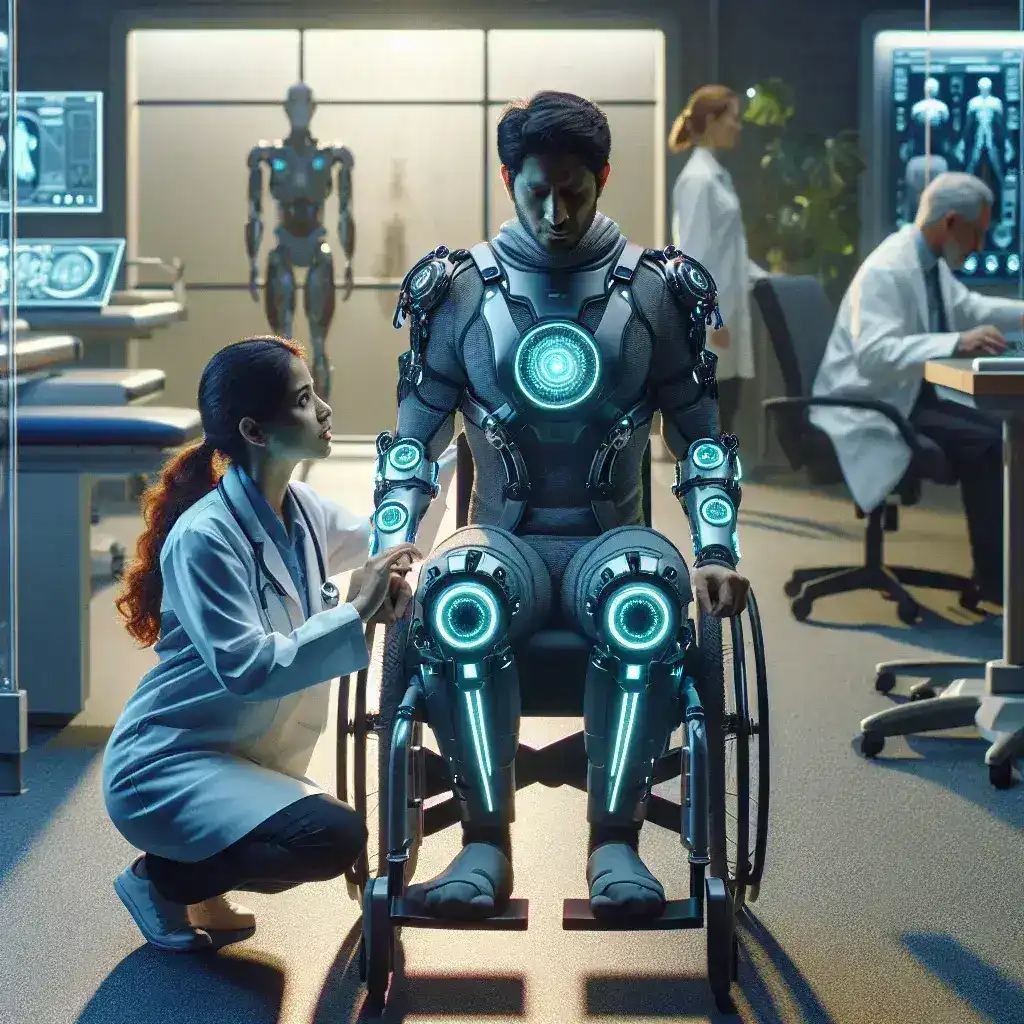Introduction
Stroke is one of the leading causes of long-term disability worldwide, often leaving survivors with significant mobility challenges. In recent years, technology has made remarkable strides in rehabilitation, with AI-powered medical exosuits emerging as a groundbreaking solution. These exosuits not only assist with movement but also actively engage with the user’s body to facilitate recovery and mobility restoration.
Understanding Exosuits
Exosuits, or wearable robotics, are designed to improve the mobility of individuals with severe motor impairments. Unlike traditional wheelchairs or braces, exosuits are lightweight, flexible, and equipped with sensors and actuators that respond to the wearer’s movements. This technology enables the exosuit to adapt in real time, providing the necessary support during rehabilitation exercises.
The Role of Artificial Intelligence
AI plays a crucial role in the functionality of these medical exosuits. Through machine learning algorithms, the exosuits analyze various data points—such as the wearer’s gait, muscle response, and even emotional state—to tailor their assistance. This personalized approach is essential for effective rehabilitation, as it allows the device to provide the right amount of support at the right time.
How AI-Powered Exosuits Work
- Sensor Integration: Exosuits are embedded with sensors that monitor movement and physiological signals.
- Data Analysis: AI algorithms analyze the data to assess the user’s needs and adjust support levels accordingly.
- Adaptive Assistance: As the user gains strength and coordination, the exosuit gradually reduces assistance, fostering independence.
Historical Context
The concept of wearable robotics has been in development for several decades. Initial prototypes were primarily focused on military applications, aimed at enhancing soldiers’ physical capabilities. However, as research progressed, the potential for medical applications became evident. By the early 2000s, significant advancements in materials and robotics paved the way for the creation of medical exosuits.
Recent Developments
In the last few years, numerous studies and clinical trials have illustrated the effectiveness of AI-powered exosuits in rehabilitation settings. For instance, the HAL (Hybrid Assistive Limb) exosuit has shown promising results in helping stroke survivors regain mobility and strength during therapy sessions. Researchers continue to investigate how these devices can be optimized for different patient profiles.
Benefits of AI-Powered Exosuits
AI-powered exosuits offer various advantages for stroke rehabilitation:
- Enhanced Mobility: These devices allow users to practice walking and other movements safely, significantly improving their mobility.
- Personalized Therapy: The adaptive nature of AI ensures therapy is tailored to individual progress, making rehabilitation more effective.
- Reduced Risk of Injury: By providing support, exosuits help prevent falls and injuries during rehabilitation.
- Improved Motivation: Engaging with advanced technology can motivate stroke survivors to participate actively in their recovery.
Real-Life Examples
Many stroke survivors have reported positive experiences with exosuits. For instance, a patient named Maria, who suffered from a severe stroke, was able to walk again with the assistance of an AI-powered exosuit. After several weeks of therapy, she regained significant mobility and improved her overall quality of life.
Challenges and Limitations
While AI-powered medical exosuits provide numerous benefits, there are still challenges to overcome:
- High Costs: The development and maintenance of sophisticated exosuits can be expensive, limiting access for some patients.
- Technical Limitations: Some exosuits may not function optimally in all environments, which can hinder usability.
- Need for Training: Users often require training to effectively utilize the exosuit and maximize its benefits.
Future Predictions
As technology advances, the future of AI-powered exosuits looks promising. Experts predict that:
- Cost reduction will lead to broader accessibility for patients.
- Integration with telehealth platforms will facilitate remote rehabilitation.
- Increased collaboration with healthcare providers will enhance rehabilitation programs.
Conclusion
AI-powered medical exosuits represent a significant innovation in the rehabilitation field, offering stroke survivors hope for regaining mobility and improving their quality of life. With continued advancements in technology and ongoing research, these devices have the potential to transform the landscape of stroke rehabilitation, making a profound difference in the lives of millions.

Leave a Reply